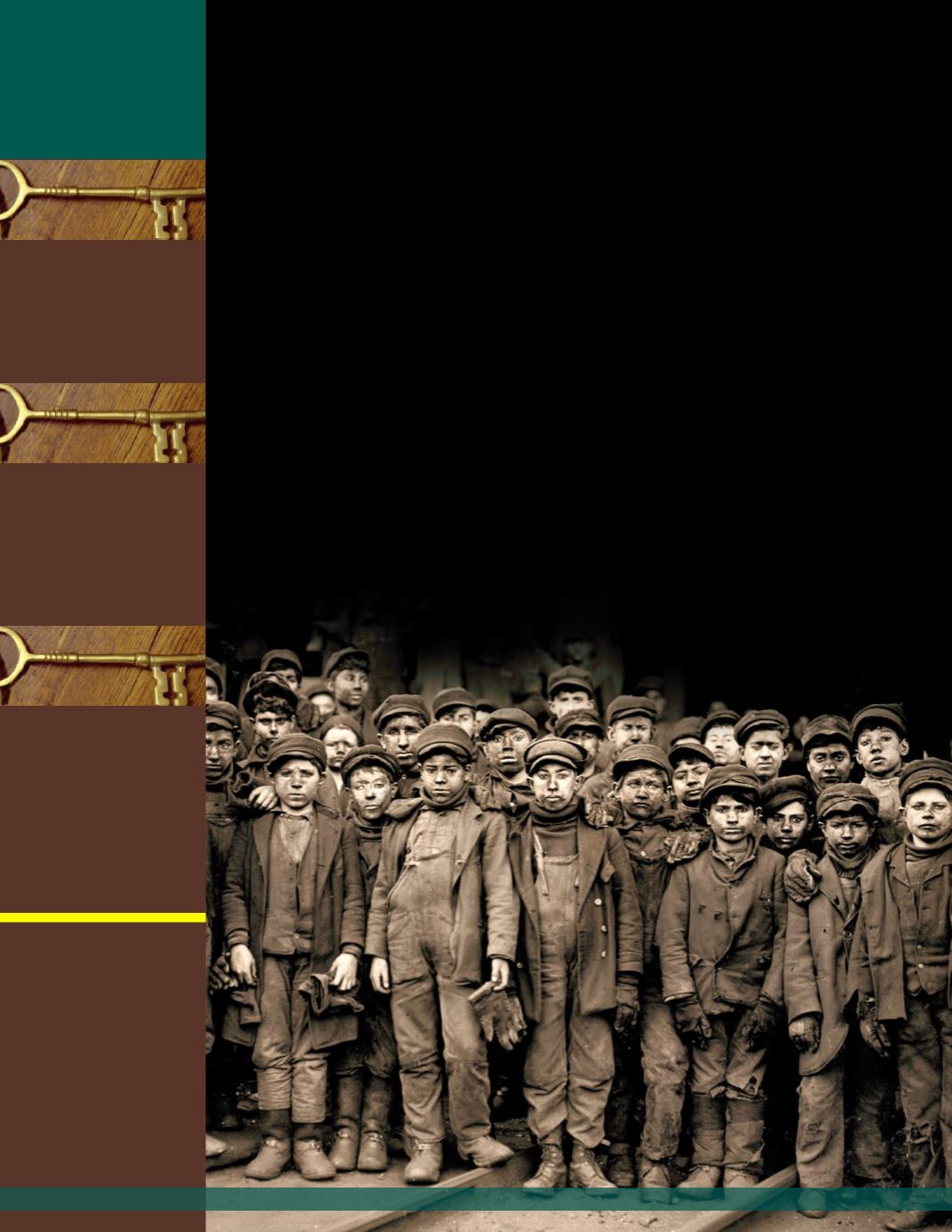
LESSON
21
KEY
WORDS
unions
strike
immigrants
innovations
retail
KEY
PEOPLE
Andrew Carnegie
Henry Clay Frick
Henry Heinz
JohnWanamaker
FrankWoolworth
Clara Barton
KEY
PLACES
Pittsburgh
Reading
Philadelphia
Shamokin
Homestead
Johnstown
I
NDUSTRIAL
G
ROWTH
C
REATES
M
AJOR
P
ROBLEMS
F
OCUS QUESTIONS
1. What were the working conditions in themines and factories during the
Age of Big Business?
2. How did unions help the working class?
3. How did industrial growth affect the growth of cities?
4. What was the Johnstown Tragedy?
Problem1: Working Conditions
With the tremendous industrial growth in Pennsylvania, several serious social
conditions emerged. Businesses became larger and brought great wealth to the
industrialists. But not everyone profited equally from this system.
Working conditions were often dirty and dangerous. Pay was low and the workers
often worked 12 hours a day for seven days a week. Mine and factory owners often
built housing for their workers and owned town stores. But these houses often were
poorly built, and the stores charged high prices for food and supplies.
Perhaps themost horrendous conditions of all were found in the coal mines in
eastern Pennsylvania. Deadly poisonous gases, floods, cave-ins, and explosions were
common. From1870-1900 alone, nearly 9,400 people died in thesemines, many of
them children. Boys nomore than 12 years old worked in themines for 12 hours a day
and were paid $132 a year. As our industries grew, Pennsylvania led the United States
in the number of children who were working in themines and factories.
94
Understanding Pennsylvania
Many young boys
worked in the coal
mines, often as
“breaker boys,”
where they sorted the
broken coal from its
impurities. These
boys worked long
hours for little pay,
and the dangerous
work killed or
injuredmany of
them.


